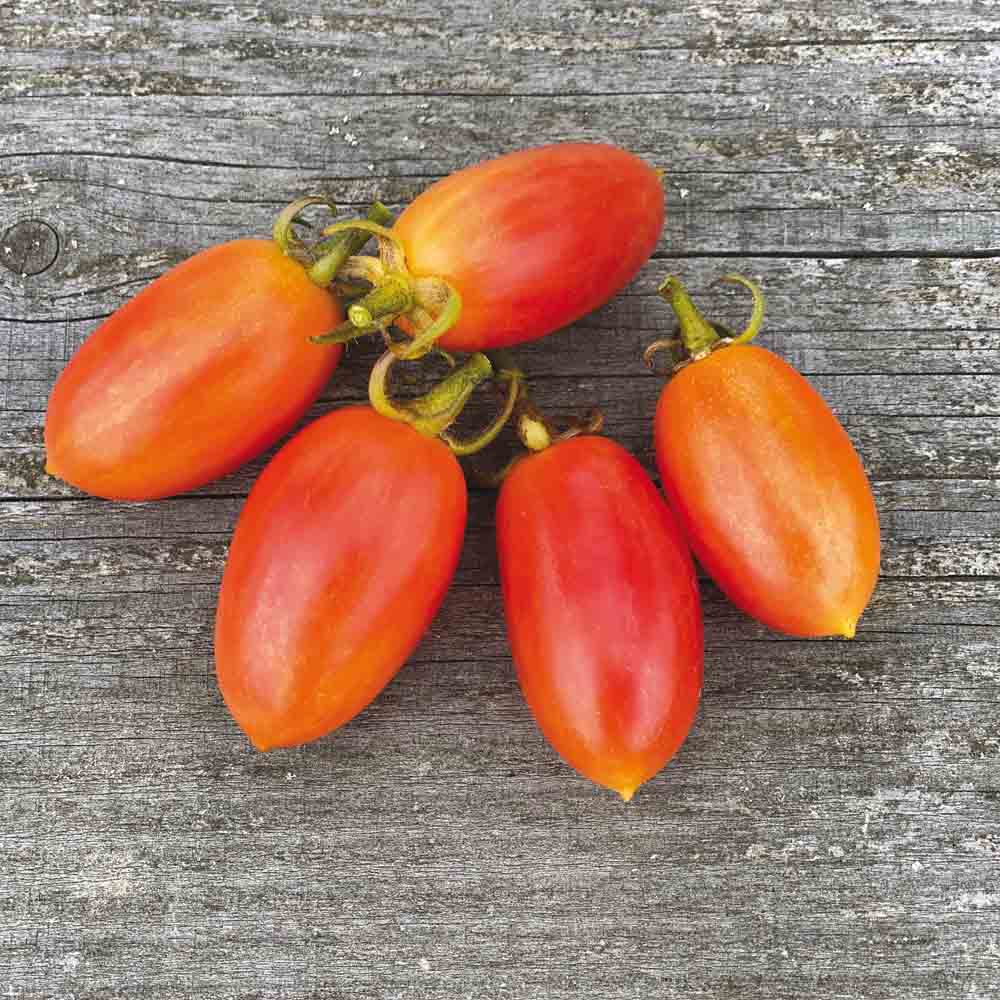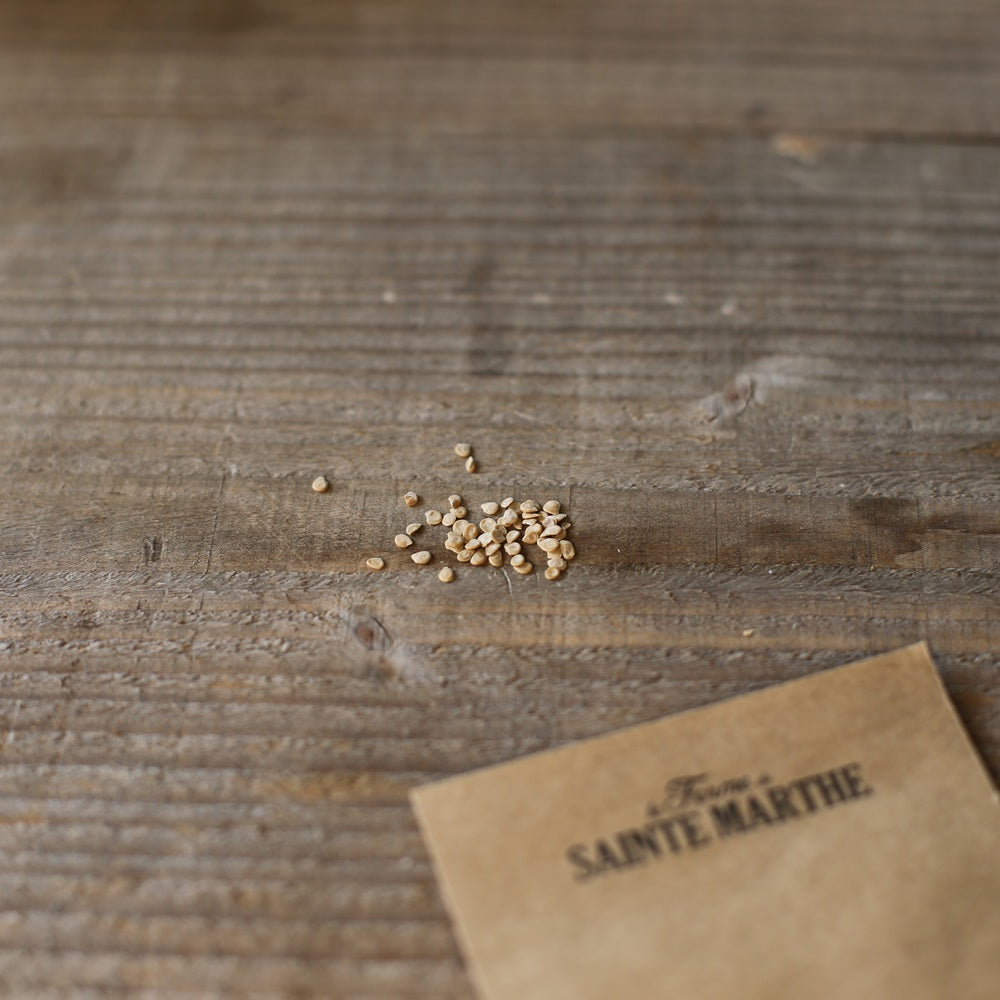TOMATO MAGLIA ROSSA AB
Solanum lycopersicum
A very productive, early, determinate to semi-determinate, elongated cherry tomato variety, suitable for growing in pots. A stocky plant, producing numerous fruits, around 20 g, pink with orange stripes, in clusters of 10 to 12. The flavor is really at its best when the fruit is still pale pink, when it will be balanced and tangy. Do not wait for the fruit to fully color as the flavor will be diminished. Ripens in 55 days.
"ARTISAN" tomatoes were created in the years 2000-2010 by Fred Hempel and his family in California, the objective being to select in a traditional and certified organic way, new varieties of tomato, productive, beautiful, adapted to a wide range of climates, quite resistant to bursting and minimal transport, but above all tasty! The result lives up to expectations. Maglia rossa is the result of the crossing of "Speckled roman" and "Black cherry" and named in honor of the pink jersey worn by the leader of the Giro.
Sowing: in March/April in a warm bed (20°) or in pots. Transplant in place when frost is no longer a risk and the plants reach 12 to 15 cm.
Distance: 70 cm between rows and 50 cm on the sunny row. Put the stakes in place before starting planting. Watering. Tomatoes like rich, loose, healthy soil. Harvest 4 to 5 months after sowing.
When and how to sow the Artisan Pink Tiger tomato?
Sowing: from February to April in a warm bed (20°) or in pots indoors or in a heated greenhouse, in fine seed compost. Tomatoes need a constant minimum temperature of 20°C to germinate.
Bury your tomato seeds 1 cm deep and then cover with seed compost. Water your compost with a sprayer to keep it moist but not soggy. Place your seed tray near a window to prevent your seedlings from shooting upwards in search of light.
Transplant when frost is no longer a risk and the plants are 12 to 15 cm tall in rich, loose, healthy soil. Space 70 cm between rows and 50 cm in the sunny row.
Place the stakes in place before starting to plant. Water thoroughly at the base once a week to prevent disease development.
Should we remove suckers from tomato plants?
Opinions differ on how to approach the infamous pruning of tomatoes, and every gardener has arguments to support their theory. To the question "what to do?" the answer is simple: whatever you want!
Pruning tomatoes by de-suckering is not mandatory; it is intended to increase the size of the fruits, their precocity and to facilitate harvesting work.
This method, however, has two drawbacks: it requires time and discernment. Indeed, the head of the tomato plant is not always easy to distinguish from a secondary branch. Furthermore, removing suckers causes wounds for your plant. It is therefore strongly recommended to consider aiding healing with a dusting of maerl or a green clay wash.
Another option is to not prune at all and allow the plant to fully develop. It will therefore need more space in the garden, i.e. 1 m between each plant. The fruits will be smaller but more numerous.
A third solution is two-pronged training. After pinching the plant 20 cm from the ground, only the two lateral shoots are kept. All the suckers are then removed.
Harvest
You can harvest tomatoes 4 to 5 months after sowing.
The enemies
The main problems that can be encountered when growing tomatoes are late blight and blossom end necrosis (black bottom).
To prevent mildew, the best solution is to protect your plants if you live in a region where it rains frequently. You can also treat your plants with Bordeaux mixture.
Blossom end necrosis, or black bottom, is not a disease. It's caused either by low calcium levels in the soil or by irregular watering. When a plant lacks water, it produces less sap, and the part furthest from the stem will die due to lack of nutrients. Therefore, water regularly, thoroughly once a week, for example.









